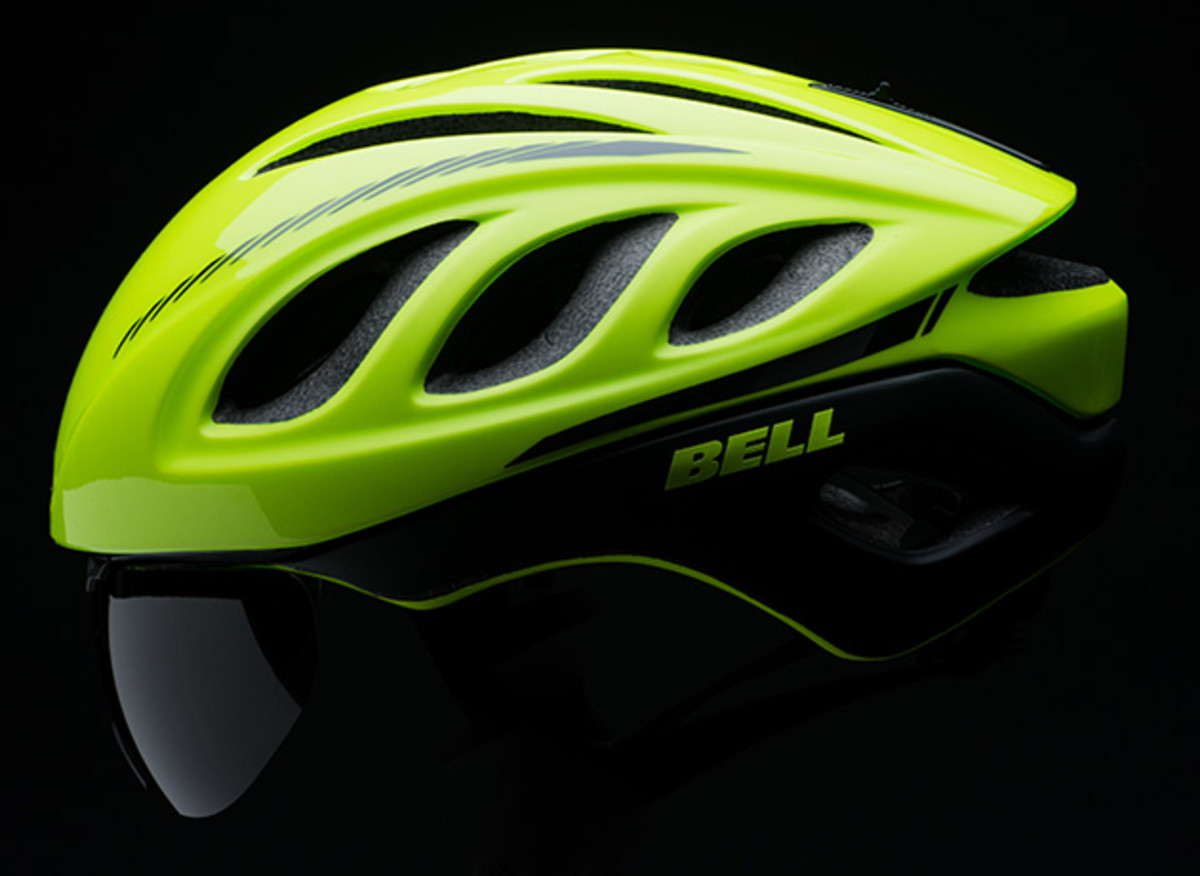Bell's High-Tech Helmet Shifts From Aerodynamic to High Ventilation

We’ve all heard about wanting our cake and eating it too. Bell Helmets knows that little saying well, having come up with a new bicycling helmet—one seen on the Belkin Pro Cycling Team and Dutch star Bauke Mollema in this year’s Tour de France—that offers up that feeling of satisfaction.
The Star Pro lets road riders choose between top-flight aerodynamic efficiency and high-tech cooling with both sets of technology wrapped into a singular design. The riders choose the tech, flipping—quite literally, mind you—between aerodynamic functions and wide-open ventilation comfort. The Star Pro’s Active Aero Technology, as Bell calls it, lets cyclists regulate airflow and aero efficiency with a ¾-inch slider mechanism on the back of the helmet that opens and closes helmet vents.
“Our intention with Star Pro was to eliminate the either/or choice cyclists have long been faced with when it comes to being faster or cooler,” Azul Couzens, Bell spokesman, tells Edge. “(The Star Pro) is purpose-built with a focus on riders’ needs.”

In a shift for helmet manufacturers, Couzens says form followed function, with Bell gathering data from its professional riders about what they wanted in a helmet and taking that to an engineer first, instead of an industrial designer.
“Now we are getting into those specifications of what the riders asked for,” he says. “This generation is really using science and data to fuel performance and looking to have the most matches left in the box for the last 15 kilometers.”
The 9.9-ounce Star Pro aims to do that with its aero tech (closed vents) offering the best wind average drag available, according to Couzens. The testing took averages from the Tour de France peloton—a 30-degree head angle at 25 miles per hour—and tested over 20 different wind angles in an independent wind tunnel to show that riders saved 5.6 watts of power output over 300 meters, the best on the market. Bell calls this real-world scenario testing, not just data for marketing claims.
Lance Armstrong is Still Riding & Finding New Ways to Compete
While sprinting requires the aero tech, a mountain climb may call on riders to open the 13 Active Aero vents of the 15 vents on the helmet. The key cooling features—other than opening vents, of course—lies in the Overbrow Ventilation that draws cool air into the intake ports and circulates it through a maze of air channels that push out warm air through exhaust ports.
During testing, the engineer who worked on the helmet went to Home Depot and built himself a small wind tunnel for personal, in-lab research. Bell found that in order to allow new, cool air to enter the helmet, exhaust ports were crucial. Without the hot air pouring out, the cool air outside the front of the head acted like a river eddy with a low-pressure build up that kept cool air away from the helmet.
Once Bell devised its plan to exhaust the hot air and let the cool air in, Bell tested the heat. Mocking a head form with 20 different data points on it, engineers found that when heated to 100 degrees, the Star Pro’s first five minutes of cooling performed better than other helmets and cooled faster than a bare head.
As riders watch their efficiency, Couzens says he expects many to open the vents for five minutes at a time to grab that cooling effect. In other words, riders will get to finally have their cake.
Tim Newcomb covers stadiums, design and gear for Sports Illustrated. Follow him on Twitter at @tdnewcomb.
